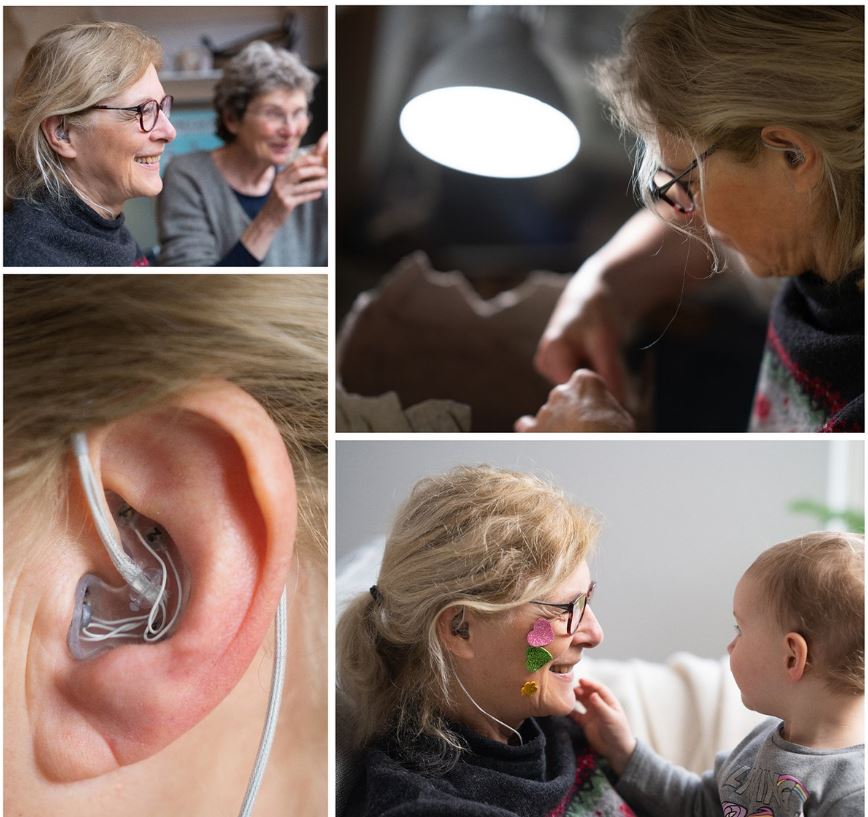AARHUS, DENMARK — A new research project aimed at developing and testing a scalable home health care technology to aid early detection, diagnosis, prevention, and treatment of serious brain diseases such as Alzheimer’s and Parkinson’s has been launched in Denmark. The project will be carried out by Rigshospitalet and Aarhus University, in collaboration with the Danish health technology company, T&W Engineering. The technology, which has received DKK 15 million in funding from Innovation Fund Denmark, is a specially developed ear-EEG device that reads the brain’s electrical activity and gently maps sleep patterns.
Recent research has shown that a person’s sleep patterns can indicate early signs of Alzheimer’s and Parkinson’s disease. The device will be tested on patient groups both with and without the diseases, and if successful, could help detect signs of the diseases 10-15 years before problems occur, providing better treatment options.
“Alzheimer’s and Parkinson’s are diseases that creep up over many years. They’re usually only discovered when you start to develop cognitive and memory-related problems, sleep disturbances or disturbances in the musculoskeletal system, for example. Diagnosis is generally so late that the only treatment option is to treat the symptoms. In the project, we’re going to try to identify signs of the two diseases 10-15 years before the first problems begin to occur, and if we can, far better treatment options will be possible”
–Professor Preben Kidmose, Head of the Center for Ear-EEG at Aarhus University
Traditionally, serious brain diseases are diagnosed too late for optimal benefit from currently available drug and non-drug treatments.
The ear-EEG technology is a small device that is placed in the ear to measure electrical activity in the brain. The method measures the extremely small voltage changes on the surface of the skin caused by electrical activity in the brain’s neurons, and it is a far more gentle and less intrusive technology than traditional sleep measurements.

According to the researchers, the technology is be made so simple that it can be used at home and over a longer period of time, and that patients can measure themselves in their everyday life. In this way, it’s possible to monitor changes in sleep and in the effect of e.g. treatments. Credit: Aarhus University / Sebastian Krog Knudsen
ear-EEG a Better Option for Sleep Monitoring?
The PANDA-project device is also equipped with an oximeter to measure oxygen in the blood, a thermometer, and a microphone that can listen to breathing and heartbeat, much like a stethoscope. The device will replace in part the existing and somewhat more troublesome sleep monitoring.
The potential ear-EEG technology is a good screening tool that can be used at home, just like a blood pressure meter. Patients can be examined in their everyday lives, and changes in sleep patterns and the effect of treatments can be monitored. This makes the technology ideal for examining patients over a longer period of time, and changes that may be early signs of serious brain diseases such as Alzheimer’s and Parkinson’s disease can be identified.
The project aims to develop home health care technology that provides a very accurate picture of patients’ health and provides more effective patient care, preferably at home. T&W Engineering, the Danish health technology company, is particularly interested in developing technology that can be used in patients’ homes.
“We want to support the vision of a patient-centric and data driven healthcare system, and we aim to have technological solutions in patients’ homes so that they don’t have to go to hospitals. Dementia is a major problem that we’ve been struggling with for a long time without getting very far, and the methods currently available are not scalable and not suitable for repeated measurements to trace or monitor disease progression. If we can develop solutions that involve patients in their own homes, we can begin to build up much better health profiles, so that we can assign patients for the more intrusive examinations and final diagnosis far earlier. I very much hope that we can help make a difference in this area, which means so much for so many people”
–Richard Tøpholm, CEO of T&W Engineering
According to the Danish Dementia Research Centre, around 12,000 have a Parkinson’s diagnosis in Denmark, while more than 100,000 are living with dementia. The Alzheimer’s Association estimates that just 40% of all Danish women with dementia have actually been diagnosed, while the figure for Danish men is around 60%.
About the Project
The project is called PANDA, which stands for “Progression Assessment in Neurodegenerative Disorders of Ageing”. It will run for four years, and it is being funded by Innovation Fund Denmark with DKK 15 million. The total project budget is DKK 26 million. Rigshospitalet’s role in the project is to perform clinical tests and collect data. T&W Engineering is responsible for integrating the various sensors into the ear-borne apparatus. Aarhus University is responsible for developing the biomarker algorithms, and T&W Engineering will develop the diagnostic support system used by clinicians.
Source: Aarhus University







